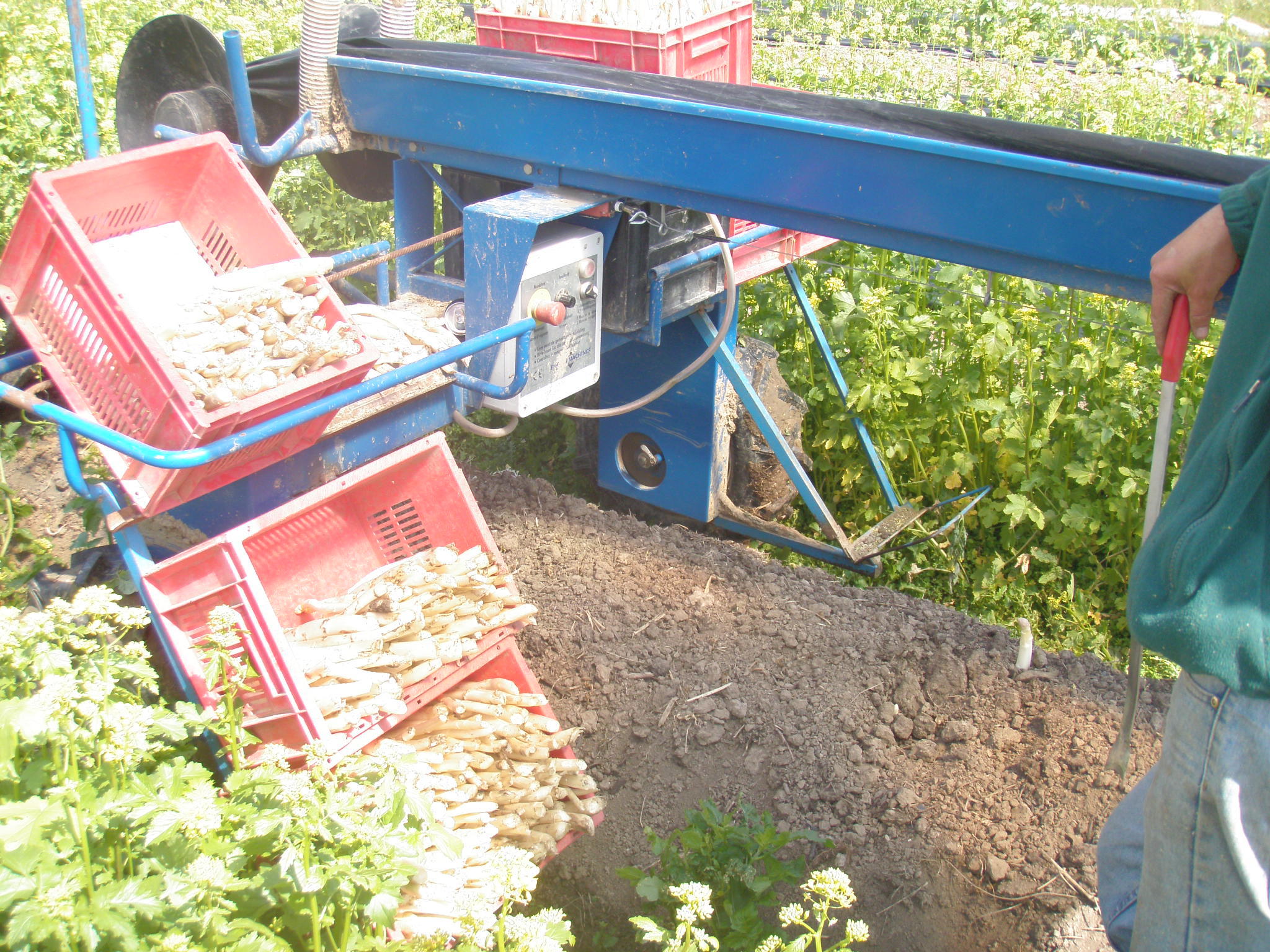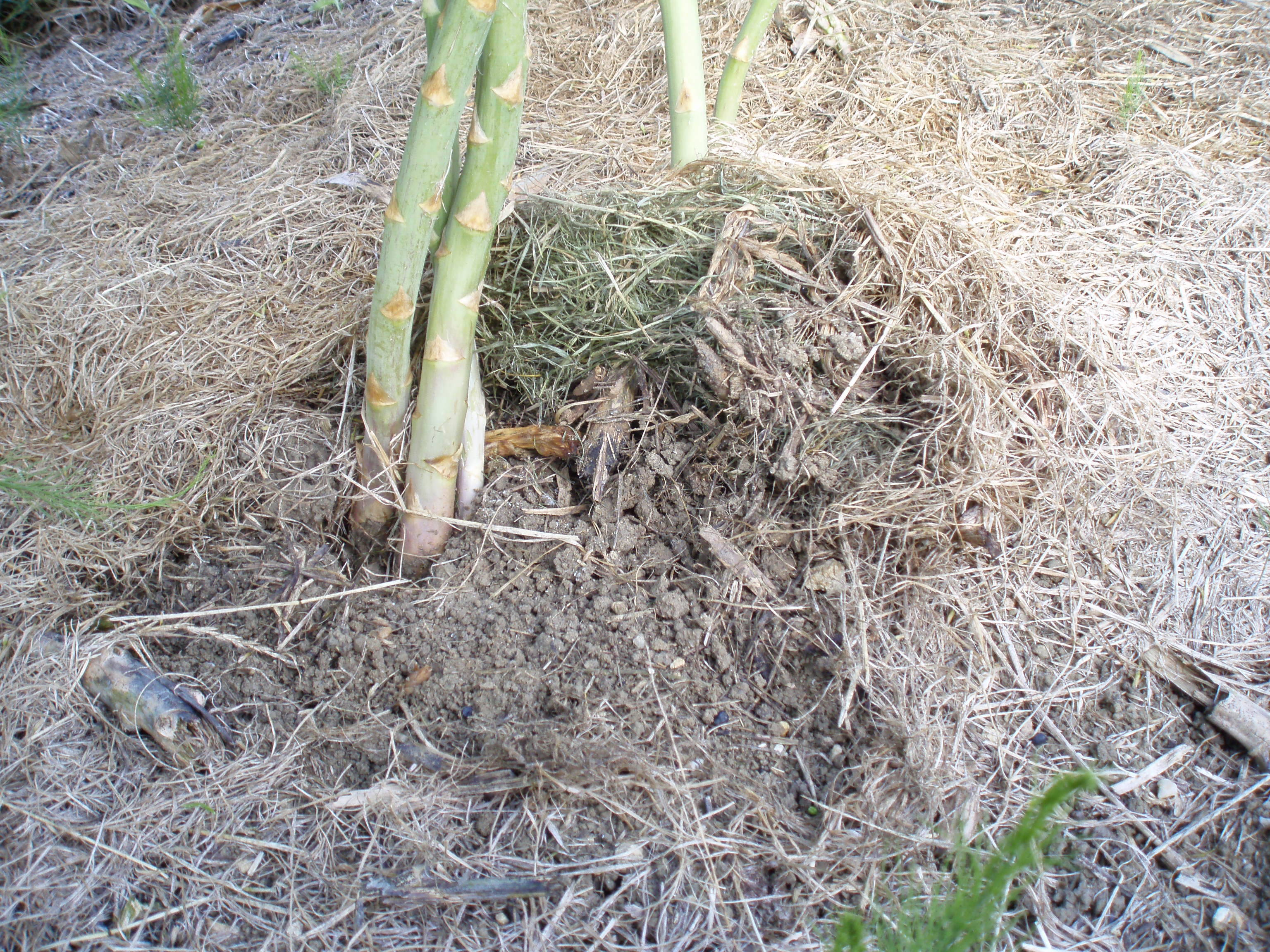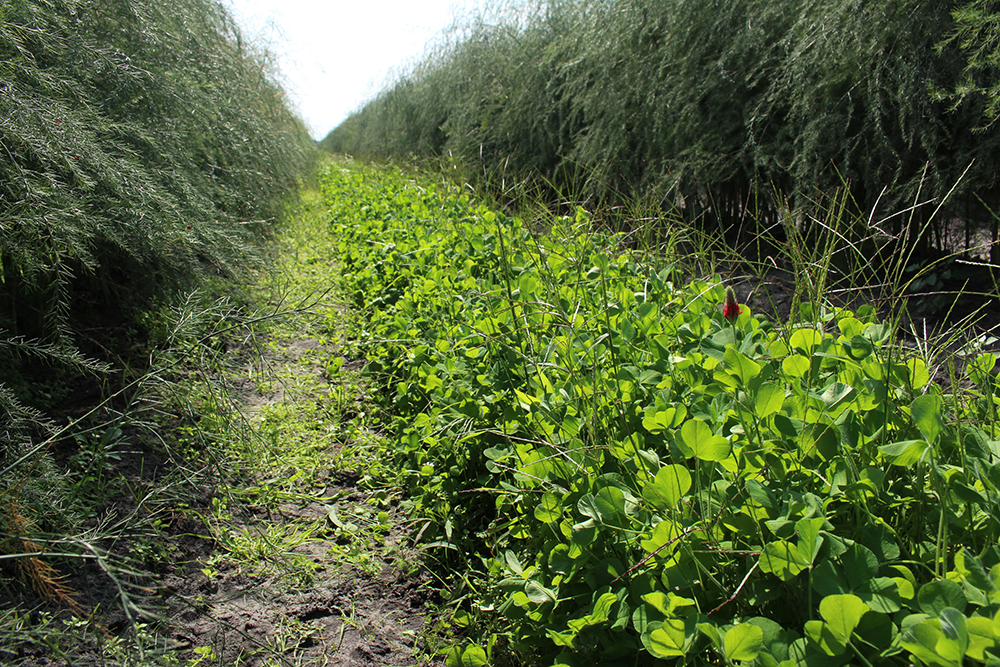The art of covering crops
Growing vegetation coverage between the rows in asparagus plantations is a recent practice. It started with green asparagus crops to facilitate the passage of harvesting machinery and to limit soil compaction. The technique has also shown other advantages, too, such as the wind protection it offers for the asparagus to ensure a better-quality harvest and straighter spears. The many agronomic, thermal, ecological and environmental benefits afforded by vegetation coverage has now led to its use with white asparagus in several European production areas.

Benefiting from a “windbreak effect”
From an agronomical perspective, vegetation cover improves soil structure through the root development of species in different soil horizons, thus enhancing the soil’s water capacity. The cover also protects against soil erosion. What’s more, growing species with taproots captures mineral elements such as nitrates in the deepest layers of the soil and limits leaching, while legumes bring nitrogen to the soil. Pulverising the foliage and root volume makes it possible to increase the soil’s humus content. The addition of organic matter significantly improves the soil’s microbial activity, thereby increasing the availability of nutrients. When a vegetation cover is maintained on a plot throughout the life of an asparagus plantation, the percentage of organic matter in the inter-rows is higher, rendering the plot more favourable for replanting, especially in asparagus groves with large spacing (more than 3.5 m). It is worth considering applying vegetation coverage permanently in order to make the most of its thermal benefits throughout the crop cycle. In spring, when the vegetation cover develops above the mounds prior to harvest, this offers a “windbreak effect” that makes the plastics less likely to fly away or be removed. It also assists by warming the mound more quickly as it is less exposed to the wind, often from the north. An additional degree above 12°C at the crown can result in an additional 30 kg/ha harvested per day at the beginning of the asparagus season. Once it has been cut down in the first days of harvest, the vegetation cover can provide the soil with greater bearing capacity for the passage of harvesting machinery, especially during rainy periods.
Planted, controlled and maintained
At the end of harvest, new plants develop, generating favourable conditions for the presence of auxiliary fauna (hoverflies, ground beetles, lacewings, ladybirds, etc.). They also limit the development of weeds in the inter-row. This is particularly useful when seeking to reduce the use of herbicides or for organic cultivation. After being pulverised, the vegetation can be placed onto the planting row to provide a natural mulch that limits grass growth. In autumn and winter, the cover can mitigate the effect of heavy rains. However, there can also be certain drawbacks to using vegetation cover, such as reduced aeration in the row and increased risk of disease due to higher humidity. Furthermore, in some situations, it can encourage the development of rodent populations.

The vegetation cover must be planted, controlled and maintained. It can be sown at the end of the harvest and benefit from the rains. At a later point, its installation will be easier if the plot is irrigated using a sprinkler system. It is advisable to combine different plant families, including grasses: rye, oats, and ryegrass (important root); cruciferous plants: fodder radish, Chinese radish, and white mustard (taproot); and legumes: Alexandria clover and fodder lentil (nitrogen fixation). The required duration of the vegetation cover (i.e., whether it is permanent or seasonal) also determines the choice of species. In this sense, it is necessary to take into account the plants’ sensitivity to frost. Oats, Alexandrian clover and phacelia are also sensitive to frost, whereas ryegrass, rye, lentil and radish are not very sensitive. Between 12 and 15 kg/ha should be used depending on the planting distance and the width of the inter-row.
Improving plastics integration
Maintaining a permanent vegetation cover requires certain adaptations, and even material investment. Long planting distances allow for grassing of the row year-round while keeping enough soil available for the mounding. Some machinery manufacturers (e.g.: Engels) have also adapted ridgers to maintain the grass cover of the row (see Equipment section). Even though grassing of the row requires repeated passages by a tractor and pulveriser to control the cover’s development (every 8-10 days with sprinkler irrigation or every 3 weeks with drip feed), fuel consumption is much lower than with tillage tools. Lastly, the “greening” of asparagus rows improves the integration of asparagus plots into the landscape and greatly reduces the “visual pollution” associated with asparagus that locals complain about in certain areas.






















